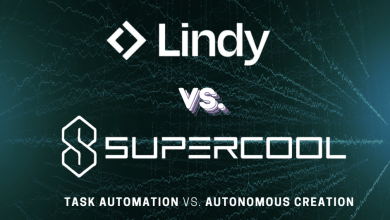
Author: Samitha Nagasinghe, Project Manager at Calero
Bio: Samitha Nagasinghe is an accomplished IT leader with over 20 years of experience driving digital transformation, product innovation, and operational excellence. He has successfully led multimillion-euro projects across fintech, telecom, and enterprise IT – boosting profitability by 200% and scaling teams by 300%. A champion of Agile methodologies and CI/CD implementation, Samitha has also delivered award-winning AI/ML solutions adopted by millions.
***
In 2024, generative AI will no longer be an experiment. It sits in the inboxes of office workers and quietly reshapes the nine-to-five. A joint study from Microsoft and LinkedIn spotted 75% of knowledge professionals leaning on smart software every day-an appetite that nearly doubled in just half a year. Colleagues who spoke up said the tools trim minutes that once dragged on, set them free for the messy, high-stakes decisions, and sprinkle a bit of fresh creativity across the page. A glance at the numbers shows how fast the push is spreading. B2B marketers, for instance, want generative engines to churn out blogs and tweak subject lines at speed-a shift they believe will lift efficiency by roughly 55% and engagement by about 51%, according to LinkedIn insights. Engineers still write code by hand, yet GitHub Copilot has slid onto their screens like a trusted pair of extra eyes; Allpay, a British fintech, claims it bolstered delivery volume by a quarter and nudged productivity up by 10%. City halls are catching on, too. People at Aberdeen City Council crunch the same figures and forecast a jaw-dropping 241% return on investment-plus an annual windfall of 3 million dollars – as the virtual assistant chews through routine tasks. Tucked away in human resources, AT&T feeds Azure OpenAI into basic query lines; the experiment already eases strain on staff, trims costs, and nudges work-life balance the right way.
Ethics and Human Oversight in Enterprise AI
AI is sliding into nearly every office these days, and that shift is stirring up fresh ethical headaches. Businesses now have to show their tools are clear, fair, and answerable to real people. Most experts point to four guardrails-explainability, bias busting, privacy protection, and, perhaps most important, steady human supervision. The catchy phrase is human-in-the-loop: whenever an AI call could bump into workers’ lives, cash, or civil rights, a human head has to double-check or scrap the recommendation. A 2024 U.S. courtroom drama brought the lesson home when a judge let a group of 40+ aged job seekers sue over claims that Workdays hiring software nudged them out. Incidents like these keep pumping up the pressure for companies to write down tough ethics rules and stick to them.
Big-name tech companies and lawmakers are moving fast. NVIDIA, Google, Microsoft, even AWS, have rolled out responsible AI rule books. IBM, never one to sit back, runs an AI Ethics Board. Across the pond, the European Union put the AI Act into law in June 2024. The new statute labels a big chunk of corporate AI as high-risk and demands fresh paperwork-risk checks, sharp documentation, and a real human look at decisions.
Put it all together, and corporate leaders see both promise and peril in the software. Ethics codes, cross-team review boards, and human-in-the-loop checkpoints are showing up as basic armor. By marrying number-crunching speed with real accountability, businesses hope to preserve trust, dodge pitfalls, and still ride the AI wave.
Human-Centric Skills for the AI Era
AI is grabbing hold of the boring chores faster than we imagined, yet bosses keep asking for real-guy skills on top of that. People-first abilities have almost staged a comeback tour. LinkedIn’s yearly skills report puts communication up front; 2024 charts show it sitting in the top slot. Getting your point across in an email, during a quick video huddle, or through a string of Slack messages is a must these days, and a misphrased note can cost you an opportunity.
Adaptability keeps popping up in conversations, too, and it’s become something people label the skill of the moment. Software updates land without warning, new apps pop once every quarter, and teams shelve tools they only just taught you last week. Workers who shrug, learn, and keep moving forward almost always win that little unspoken bonus of goodwill from management.
Knowing how to use an AI tool has become a new core skill for workers these days. Survey data shows that on LinkedIn’s platform, AI literacy recently surpassed all other positions to top the site’s list of emerging talents. Also, U.S. hiring managers are paying attention: roughly two-thirds now admit they wouldn’t bring someone on board, who can’t show at least a little comfort with AI. Companies around the globe, from small startups to well-known names like JPMorgan and P&G, are advertising roles that ask for experience with generative AI. Inside LinkedIn’s own numbers, applicants who mention terms such as “ChatGPT” or “Copilot” suddenly outnumber everybody else by a jaw-dropping margin of 142× more. Creative prose-writers, designers, marketers-are the ones leading that charge. Acting on that demand, three-quarters of workers say AI know-how is the boilerplate if you plan to stay competitive, and four-fifths believe it opens new doors. Many big firms have started in-house boot camps, hoping to close the gap quickly.
On another front, business leaders repeat the same advice: don’t lose sight of judgment and critical thought. A recent Springboard report from 2024 found 70% of executives convinced that a serious soft-skills gap is dragging performance down. Nearly all of them named strategic and critical thinking as the one ability they desperately need their teams to master. Companies today are searching for workers who can pick apart the insights an AI spits out, poke holes in old assumptions, and still come out with smart choices when the situation gets messy.
Rethinking the Role of Middle Managers in an AI World
Nobody at the office pretends that spreadsheets and slide decks don’t ever get boring, and that real energy only sparkles when people, technology, and fresh ideas pull together into something amazing. That mix is what most champions of AI-tinted workplaces assure leaders they can create, and the key is a smart shift that lets managerial talent step out of the routine grind and into the spotlight they were always meant to occupy. Planning, appraisal, number-crunching – even those helpful weekly status reports are already being scooped up by fast-learning bots, and with that lift comes room for a more human touch that wires teams together, nudges everyone in the same direction, and helps curious minds find the problems no algorithm can yet solve.
Microsoft’s 2024 Work Trend Index reports that managers now spend a lot less time on day-to-day oversight because AI tools like Copilot handle many routine tasks for them. Instead, they focus on more human and strategic work: guiding teams on how to use AI responsibly, linking the program’s insights to company goals, and making sure new tech sparks creativity without adding extra mental load. The survey found that 61% of managers are redesigning workflows around AI to boost creative output and cut cognitive clutter.
A similar 2023 McKinsey report shows middle managers acting like a vital bridge between smart systems and frontline staff. They no longer need to sign off on every step; their job is to read AI reports, explain what they mean in real context, and coach teams on making subtle decisions with that info. The firms that win are those teaching their leaders AI basics, change management, and clear problem framing-skills that once seemed extra but are now must-haves in every AI-powered workflow.
You can already see the shift playing out in real businesses. At AT&T, Azure OpenAI now answers basic HR questions, and team leaders have been trained to help the system improve. Their job is to craft solid prompts, check the answers for bias or policy gaps, and show workers how to use the tool fairly and well. Under this setup, a manager must blend two skills: enough tech know-how to see how AI works and enough human touch to motivate people and untangle problems that machines can’t touch. Because of that mix, middle management is rising in importance instead of fading. Far from being replaced, these leaders are key to scaling AI, steering it toward wisdom, fairness, and real growth for everyone involved.
This fresh vision isn’t just talk; it’s something we need right now. With AI showing up in almost every job, middle managers have to step up as the translators and conductors of this new setup, guiding teams that blend people and machines working together.




